A team of scientists has been studying two cracks in an ice tongue to see if they would meet. During that study the tongue was rammed by a giant iceberg.
The team studying the development of two major cracks in the Mertz Glacier Tongue has captured a sequence of satellite images showing how a giant iceberg, B-9B, rammed the tongue they were studying and broke it off.
B-9B is about 97 kilometers long. The new iceberg is 78km long and 33 to 39km wide. It has a surface area of 2,500 square kilometres. That's about as big the UK's county of Kent, except that the white cliffs of Dover are a mere 100 meters high, whereas this baby is 400 meters high.
The new berg represents about 70 years worth of glacial growth.
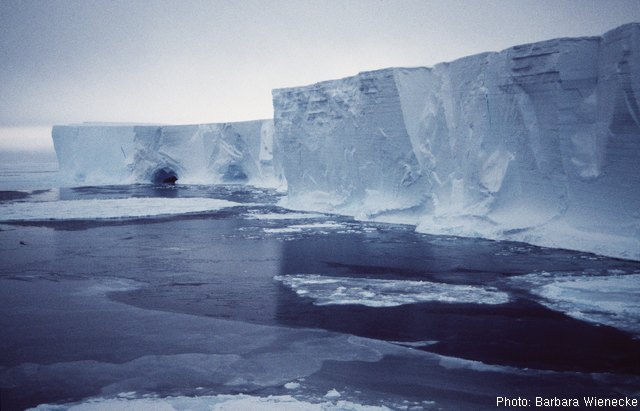
The above image, and all of the following images are obtainable as larger images from the original sources cited in the credits.
From the Antarctic Climate and Ecosystems Cooperative Research Centre (ACE CRC) press release 26 Feb 2010:
A massive iceberg has just calved from the Mertz Glacier Tongue in East Antarctica. This calving event was detected by a joint French-Australian team working on a project called "CRACICE" (Cooperative Research into Antarctic Calving and Iceberg Evolution).
The Mertz Glacier flows into the ocean with a flux of 10 to 12 Gigatons of ice per year. The floating part of the glacier, which originally extended over 160km from the grounding line to the front, is now only 80km long. The glacier tongue which protruded 100+km from the coastline is now about 20-25 km long.
...
...
The collision of ... [B-9B] ... with the glacier tongue in early February apparently precipitated the calving event.
Apparently? Are some scientists just too cautious with words?
The satellite images available indicate that the event occured between the 10th and 13th as one can see in the images below.
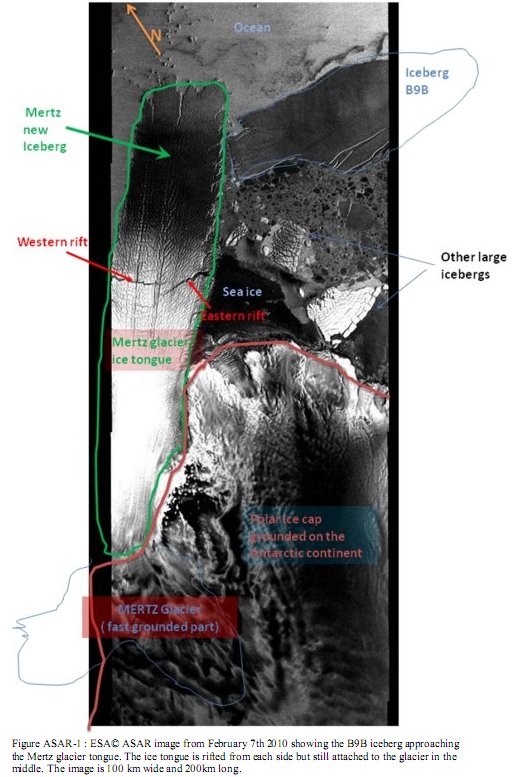
.

.

.

Two large rifts cutting through the southern part of the glacier tongue have been developing over many years. Rifting progressed from the east margin of the Mertz Glacier in the 1990s until 2002 when another rift started to develop from the western side.
The researchers note that the two rifts did not join but the region was active, leaving the part attached "like a loose tooth". B-9B calved from the B9 iceberg in 1987. After drifting westward it ran aground on the Ninnis Bank less than 100km east of the Mertz Glacier Tongue, in 1992 . B-9B recently ungrounded, rotated, and collided with the glacier tongue.
The future motions of these two icebergs are of great interest to science. There are concerns that they may significantly affect the local ocean circulation system and biodiversity. Or, as the UK's Daily Mail puts it in its Google news search attention getter: "Iceberg the size of Luxembourg could plunge Europe into cold winters."
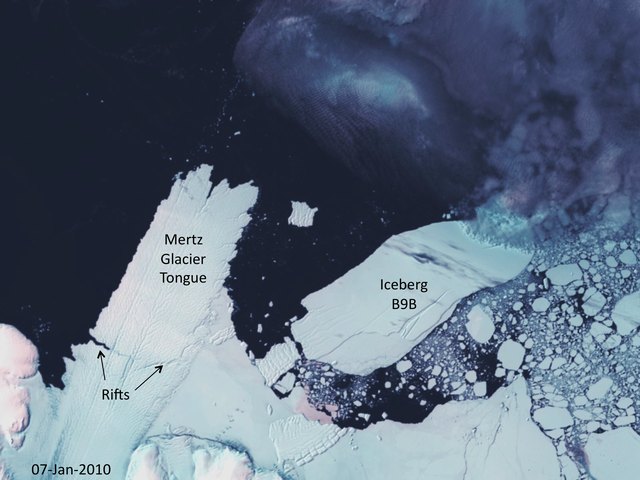
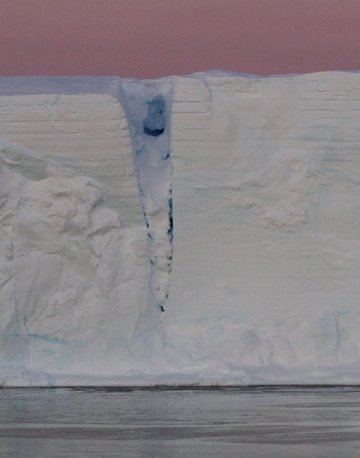
lo-res excerpt from a photo showing a rift.
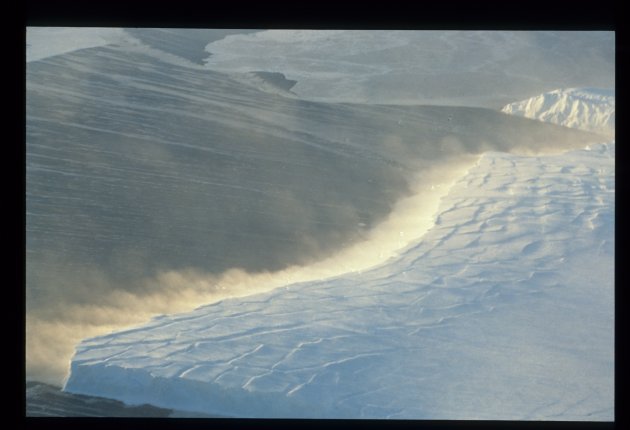
lo-res photo shows Mertz Glacier Tongue.
Credits:
All b/w images and words quoted are from the ACE CRC press release.
Color images are from the Australian government's Australian Antarctic Division website:
http://www.aad.gov.au/default.asp?casid=37551
Resources / related studies:
http://ipy.arcticportal.org/archiving/itemlist/tag/Antarctic
A follow-up article may be of interest: Glacier Sticks Out Tongue - Scientists Say Aaaah!
[edit] added pdf link:
A free pdf is available showing the calving and drift of iceberg B-9 in the Ross Sea, Antarctica -
http://journals.cambridge.org/action/displayFulltext?type=1&fid=222910&j...



Comments